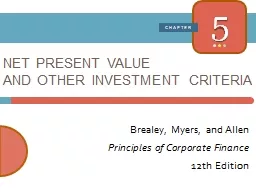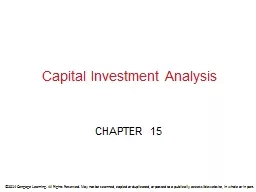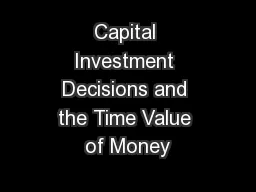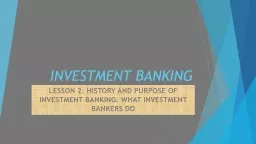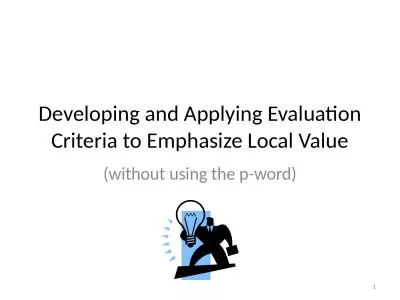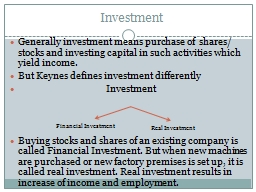PPT-Net Present Value and Other Investment Criteria
Author : escapistlego | Published Date : 2020-08-28
Topics Covered A Review of The Basics Payba ck Internal or DiscountedCashFlow Rate of Return Choosing Capital Investments When Resources Are Limited NPV and Cash
Presentation Embed Code
Download Presentation
Download Presentation The PPT/PDF document "Net Present Value and Other Investment C..." is the property of its rightful owner. Permission is granted to download and print the materials on this website for personal, non-commercial use only, and to display it on your personal computer provided you do not modify the materials and that you retain all copyright notices contained in the materials. By downloading content from our website, you accept the terms of this agreement.
Net Present Value and Other Investment Criteria: Transcript
Download Rules Of Document
"Net Present Value and Other Investment Criteria"The content belongs to its owner. You may download and print it for personal use, without modification, and keep all copyright notices. By downloading, you agree to these terms.
Related Documents

